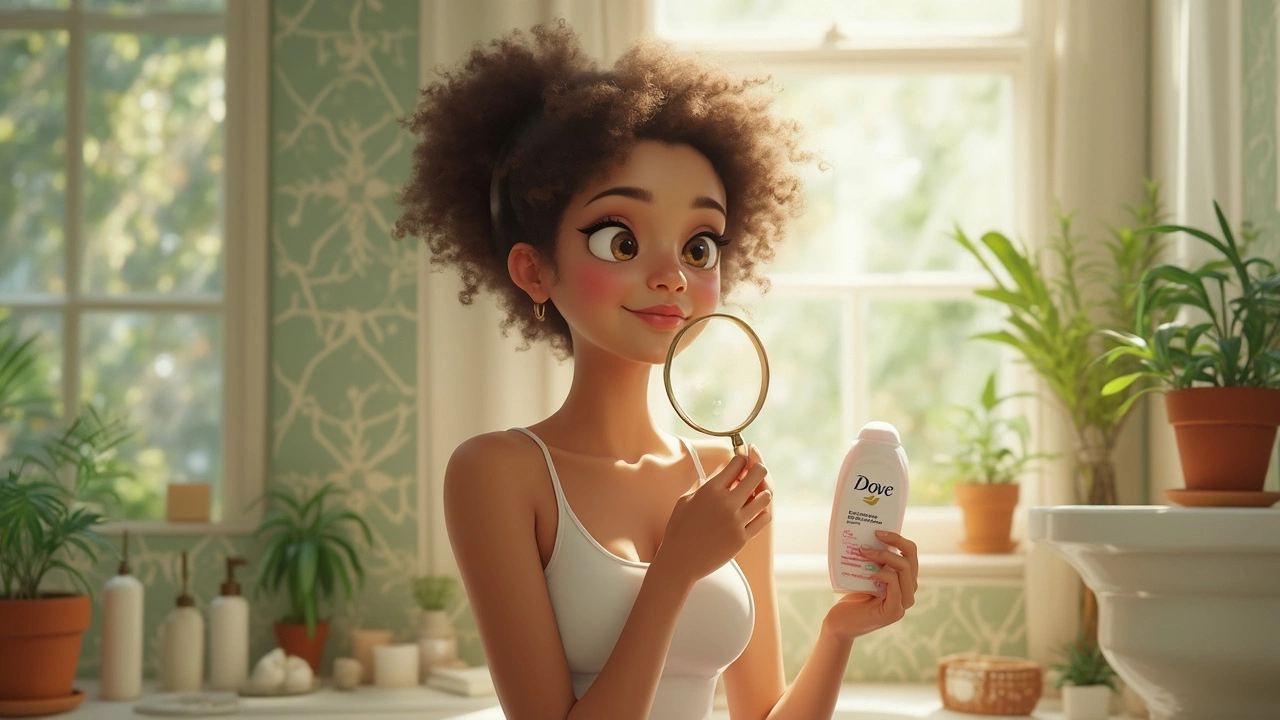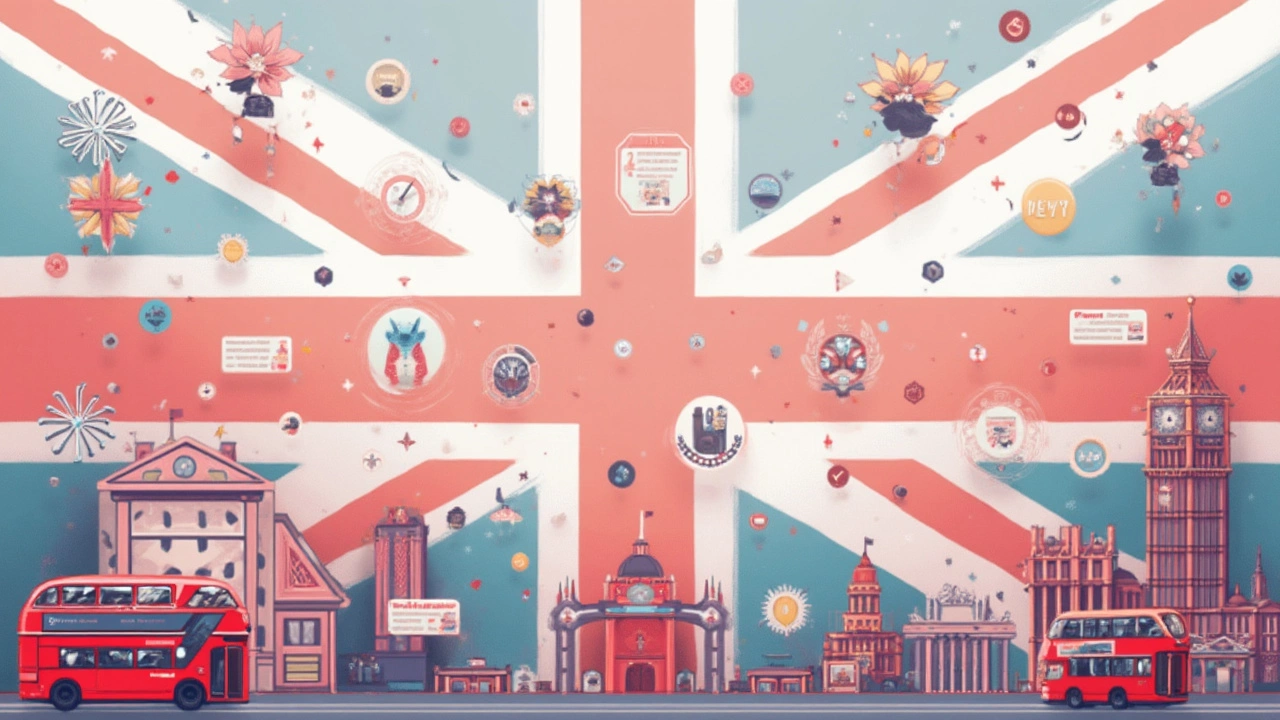Is Dove Cruelty-Free? What You Need to Know in 2025
 Apr, 20 2025
Apr, 20 2025
Walk through any drugstore and you'll spot Dove products everywhere. Bottles stamped with phrases like ‘dermatologist approved’ and ‘gentle formula’ may make Dove look like a safe pick for cruelty-free lovers. But is it really?
Sorting out if a giant brand like Dove is truly cruelty-free gets tricky fast. You can't just take the packaging at face value. Companies love to use buzzwords that sound animal-friendly but might still leave room for some sneaky loopholes.
If you want to avoid buying makeup or body care tested on animals, it pays to get clear on what brands are actually doing—behind the scenes and around the globe. Regulations change, company policies shift, and sometimes a ‘cruelty-free’ sticker doesn’t mean what you think.
Ready to cut through the confusion? Let’s dig into the real facts behind Dove’s cruelty-free status, why things aren’t always black and white, and how you can spot brands that truly stick to their promises.
- Dove’s Animal Testing Policy Explained
- What Laws Say About ‘Cruelty-Free’ Labels
- Dove in China and Other Hotspots
- Shopping Tips for Cruelty-Free Fans
Dove’s Animal Testing Policy Explained
So, where does Dove really stand when it comes to animal testing? In 2018, Dove publicly announced it had stopped testing on animals anywhere in the world and that it wouldn’t allow others to test its finished products or ingredients for them. This move got a lot of attention, and Dove even scored a spot on PETA’s list of cruelty-free brands.
Here’s what the company claims now: Dove says it doesn’t test on animals and makes sure its suppliers and third parties stick to that rule for all finished products. They also kicked off a push for ‘alternatives to animal testing’ in the beauty industry. Sounds pretty solid on the surface.
But there’s a catch. Dove’s parent company, Unilever, sells lots of brands that still allow animal testing where laws require it—like in China. Dove says it pulled all its products from post-market testing in China back in 2018, and now avoids selling anything there that would need animal tests. They’ve worked with Leaping Bunny, one of the highest standards for cruelty-free certification, but they aren’t fully certified by every major third-party (like Cruelty Free International for all markets).
- If you only buy from brands that never test on animals, it’s smart to look beyond big headlines. Check if the entire parent company avoids animal testing or just the individual brand.
- Look for third-party logos, like PETA’s bunny or Leaping Bunny, on Dove’s packaging. But always double-check on the official sites, since logos can be confusing or misused.
- Be aware that suppliers matter too. Dove claims to hold them to the same standard, but it’s not always easy to verify with massive supply chains.
If you want to see the brand’s official stance, check the FAQ on Dove’s website or see their listing on PETA’s Beauty Without Bunnies database. For real peace of mind, look for brands with full Leaping Bunny certification, which involves audits and a tough screening of the whole supply chain.
Here’s a quick breakdown for reference:
| Dove’s Position on Animal Testing (2025) | Status |
|---|---|
| Dove’s own animal testing | No |
| Dove’s suppliers | Supposedly no |
| Third-party testing | Not allowed |
| Sold where animal testing is required by law? | Not anymore |
| Parent company (Unilever) | Still sells brands that test if law requires |
What Laws Say About ‘Cruelty-Free’ Labels
Let’s be real: the phrase cruelty-free isn’t controlled by a worldwide law. In the U.S. and most other places, there’s actually no official government definition of what ‘cruelty-free’ even means. That leaves a ton of room for brands to use the words how they want—sometimes stretching the truth.
Here’s what matters: In places like the European Union, all cosmetic animal testing and the sale of newly animal-tested products have been banned since 2013. If a product sells in the EU, that alone usually means it didn’t involve animal testing after that date. Brands have to play by these rules or risk big trouble.
But there’s a catch. In some countries—like mainland China—government rules still require imported cosmetics to be tested on animals before they can hit store shelves. So even if a brand claims to be cruelty-free at home, they might still allow animal tests in countries with different rules. That’s the fine print a lot of folks miss when reading those labels.
Third-party certifications help a ton. Logos like Leaping Bunny or PETA’s little bunny mean a brand passed a more reliable cruelty-free check, including not selling in places that require animal testing. Smart shoppers look for these logos instead of just trusting what’s printed in big, bold letters on the bottle.
- No global legal definition for ‘cruelty-free’—brands use it however they want.
- EU bans all animal testing for cosmetics (since 2013).
- Some countries, like China, still require animal testing for imported cosmetics.
- Look for third-party logos, not just words, for real proof.
Here’s an at-a-glance look at how different regions treat animal testing:
| Region | Animal Testing Law |
|---|---|
| EU | Banned for cosmetics |
| USA | No federal ban; some states like California restrict it |
| China | Some imported products must be tested on animals |
| Australia | Banned for new cosmetics since 2020 |
Bottom line: until there’s a single definition, always check what a brand means by ‘cruelty-free.’ Dig a little deeper than the label to see where they really stand.

Dove in China and Other Hotspots
Here’s where things get complicated for Dove and its cruelty-free claims: China. For a long time, if any brand wanted to sell regular cosmetics in mainland China, the law required animal testing. That was a big problem, because it meant even brands that didn’t test in their home countries sometimes had to do it just to get on shelves there.
Dove likes to say they don’t test on animals, and that’s mostly true for their own finished products in most countries. But it matters where those bottles actually end up. Back in 2019, Dove made a public statement saying they don’t allow animal testing anywhere their products are sold—including China. They actually got PETA’s “cruelty-free” approval that year, which sounded like a victory for animal lovers.
Here’s the catch: the rules in China started changing around 2021. Ordinary cosmetics, like shampoo and lotion, no longer automatically face animal tests before hitting store shelves. But, if the product is considered “special use,” like sunscreen or products for babies, or if there’s a safety concern, animal tests can still happen by law.
Dove claims they don’t sell those “special use” items in China—just the basics that now avoid mandatory tests. That puts them in a pretty good spot, but it’s still not totally risk-free. If Chinese regulators decide to investigate a product (like after a consumer complaint), they still reserve the right to test.
If you want to break it down clearly, here’s how the situation looks today:
- Dove does NOT allow animal testing for finished products anywhere, including China.
- They only sell “ordinary” cosmetics in mainland China, which usually avoids mandatory animal testing these days.
- There’s still a slim chance of post-market testing if safety issues pop up, but this is rare.
For other places like the EU, UK, and Australia, the rules are much stricter, and animal testing for cosmetics is generally banned. This is why cruelty-free brands often promote their compliance with these countries’ regulations all over their websites and packaging.
If you’re super strict about being cruelty-free and want zero-risk, go for brands that totally avoid markets with testing loopholes. But if you’re okay with a tiny risk that’s mostly out of the brand’s hands, buying Dove in 2025 lines up pretty well with cruelty-free values for most products.
Shopping Tips for Cruelty-Free Fans
It can be a headache keeping track of what’s really cruelty-free these days. Companies change policies, loopholes appear, and greenwashing is everywhere. Let's take out the guesswork with some real, practical tips.
- Check for third-party certification. Look for trusted logos like Leaping Bunny or PETA's Beauty Without Bunnies. These groups double-check a brand's animal testing stance. According to Leaping Bunny, “Our program is the gold standard for cruelty-free certification.”
- Don’t trust buzzwords alone. Just because a product says “Not tested on animals” doesn’t mean the whole company is free from animal testing somewhere in their process. Read the fine print or check the brand’s FAQ online if you want to be sure.
- Watch out for global sales. When brands like Dove sell in places like mainland China, there’s a snag. China often requires animal testing by law, though things have started to shift in recent years with new exemptions. Still, double-check whether a brand has applied for those exemptions.
- Use legit apps and databases. Sites like Cruelty-Free Kitty and Logical Harmony keep updated, easy-to-read lists of brands. Bookmark them or keep their apps handy on your phone.
If you want to go the extra mile, here’s a quick breakdown of the top certifications and what they actually mean:
| Certification | What It Means |
|---|---|
| Leaping Bunny | Internationally recognized; covers all brand, ingredients, and suppliers—no animal testing at any level. |
| PETA | Brand submits paperwork and promises they and their suppliers don’t test on animals. |
| Choose Cruelty Free (CCF) | Australian standard, checks that products and suppliers are cruelty-free and vegan. |
Here’s an extra tip: if a cosmetics brand doesn’t list its stance clearly on their site, or dodges questions, that’s a red flag. Ethical brands love to brag about being cruelty-free.
Dana Ward of Cruelty-Free Kitty says, “When in doubt, reach out directly. Brands that are truly cruelty-free will have no problem explaining their status to you.”
Next time you’re shopping for Dove or any other brand, save yourself some stress: check the certifications, read up, and trust—but verify. Your wallet and your conscience will thank you.
